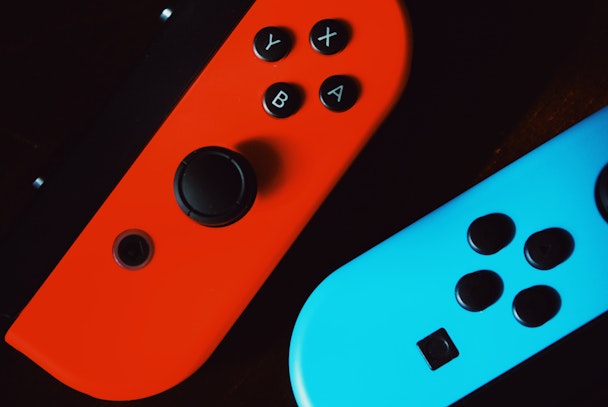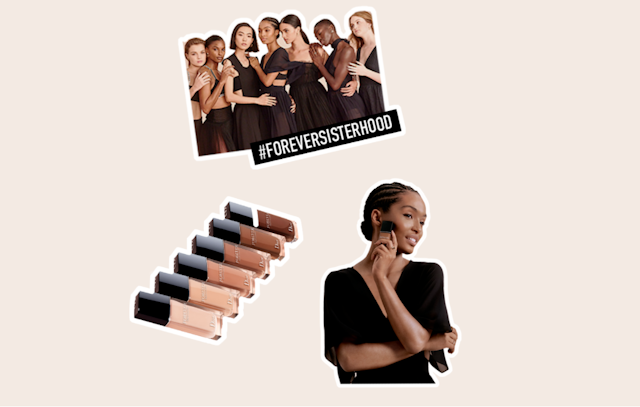Wondering what metaverse influencer marketing will look like? Look to gaming right now
As part of The Drum’s Metaverse Deep Dive, we consider three areas – streamers, digital goods and virtual brand avatars – that could lead your brand into the metaverse today.

Video games, and the influencers working around them, could offer entry points for brands looking to build in the metaverse / Aleks Dorohovich
Following Mark Zuckerberg’s headline-grabbing Meta rebrand last year, many expect the next iteration of the web to be built around social networks. However, in the present, the closest thing resembling a ‘metaverse’ isn’t Facebook or TikTok, but enormously popular games such as Roblox and Fortnite.
And the influencers that make their living on those platforms – streamers and competitive gamers – are the ones most likely to pioneer new forms of content creation and brand activations in the metaverse, as it .
Dudley Nevill-Spencer, research and technology director at creative agency Live & Breathe, points to Epic Games’ shooter title as a model for future iterations of the metaverse. “Fortnite is a game that is slowly expanding its functionality to events and everything up. You’re going to see these platforms copy each other and expand their functionalities.” The game, and titles seeking to emulate its success, he says, hold major clues for those interested in exploring the potential for marketing in this nascent space.
As we explored earlier this week, the language of gaming has come to inform expectations of what the metaverse will look like. but it’s not just the fact that streamers or video game influencers are already working in spaces that might one day make up the metaverse. Developers and publishers have been working to acculturate audiences to paying for additional content in increasingly granular ways, whether it’s via season passes, cosmetic skins or unlockable content.
Increasingly, game studios are considering adding digital assets in the form of NFTs to their titles. While those efforts have been received with skepticism by gamers and consumers, these technologies are also considered to be some of the building blocks of the metaverse.
“Virtual objects, virtual currencies that are created by creators or sponsored by a brand, will be the foray of influencer marketing into the metaverse,” says Lyle Steven of Mavrck, a company that measures the impact of influencer campaigns for brands. He predicts that “NFTs will play a major role.”
The announcement of Twitch Drops – a new feature on the popular streaming service that allows creators to provide exclusive, limited digital content to specific communities – is a clear development in this direction. According to Stevens, influencers and creators will play a major role in bringing adoption of metaverse platforms by the wider public to a “tipping point”.
“Whether it’s Oculus, HTC, PlayStation VR, they’re going to bring their audiences from other feeds into that consumer experience.”
Digital scarcity
Luxury goods brands have already made some headway with NFTs and digital goods. The sector has also been au fait with influencer marketing for many years.
At agency 180Luxe, managing partner Laurent François says “there’s a lot of curiosity” about how luxury brands can dabble in this space. “If you create things that are just gimmicky, it’s going to be a dismantling of the value of the brand. But if it’s something that serves a narrative, that gives a more playful way to access the understanding of the craftsmanship... if it’s a way to bring people further into the connection with the brands, we think it’s pretty cool.”
A recent campaign for Dior, ‘Foreversisterhood’, saw the agency create a platform that allowed users to personalize photos with stickers inspired by the campaign, keying into existing behaviors on Snapchat.

The aim, he says, was to create “social artifacts” that would “turn the campaign into something the user can participate in, engage with and actually share.” While François says 180 Luxe is “extremely cautious” about recommending NFT activations to clients, it’s not hard to see how similar campaigns might make use of other kinds of digital assets, or begin combining such activations with their influencer work.
Luxury watchmakers, parfumiers and fashion maisons are already used to grappling with questions of value and scarcity, concepts key to the emergence of NFT trading. “It’s a matter of value proposal. How do we create scarcity? How do we manage scarcity?” says François.
Michael Cruz, head of content at boutique creative agency Summer Friday, advises taking baby steps. “What we have learned so far is that if brands are looking to be successful, they need to focus on a unique value proposition and a strong narrative,“ he says.
“The strategy in these early days should be less centered around marketing and more about immersing yourself in this world, participating while offering real utility and leveraging the technology in an interesting way.
“However, if your brand has real-life clout like most high-end luxury brands, then a digital object may be enough. If your brand owns or has built a franchise, then perhaps fandom and its established community might be enough to garner success. If, however, you’ve got none of those things, viability is more contingent on the utility as opposed to scarcity or status. Cool art is not enough.”
Virtual influencers
As metaverse platforms and applications emerge, new forms of influencer will likely develop in parallel. Nevill-Spencer is also founder of the Virtual Influencer Agency (VIA), a company set up to provide brands with bespoke, virtual influencers – that is, digital characters designed to appeal to and engage with a specific audience online, owned by a brand client.
While virtual characters – both original and digitized forms of brand mascots such as Hatsune Miku, Lil Miquela or KFC’s digitized Colonel Sanders – have garnered fandoms and pulled in marketing dollars in recent years, both audiences and marketers are some distance away from embracing them en masse.
In the future, he argues, the metaverse will provide the foundation for virtual influencers that exist across platforms – characters that embody a brand, but that exist on every relevant platform simultaneously. In return, virtual influencers could help anchor brands across many platforms. “The integration point between the brand and a [metaverse] is an avatar,” he explains.
Since the surge of interest in web3 and the metaverse last year, he says his business has seen a significant uptick in demand.
Like Steven, Nevill-Spencer suggests the work influencers do in personalizing the web (and its future iterations) will help pull in wide audiences. “The avatar strategy is really about making the metaverse go mainstream for mums. That’s where I see it in the next five years and the brands that do that right will dominate.”
While the metaverse is still a future proposition, Nevill-Spencer says marketers should be considering the foundations for later work today and that virtual avatars and influencers are key. “Firstly, there is enough volume there with hard-to-reach audiences, particularly Gen Z, for it to be a relevant strategy. But if you look to the future, that audience is going to mature... more people are going to come into it as it becomes easy to operate in and easier to access.”
“You’re going to be building for a couple of years but you’re going to be building something incredibly valuable, which we know is going to continue to grow.”
For more on the exciting new opportunities for marketers in this rapidly evolving space, check out The Drum’s Metaverse hub.
This article was updated on 8 February.

